
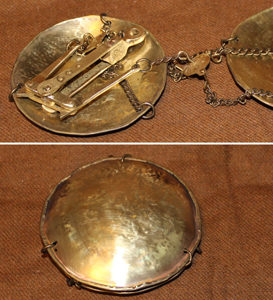


Balance scales were often needed for transactions as all business was based on the barter system, or the approximated value of the trade items according to the needs of the day. Even coins, traded from Arabic sources in earliest times, later coined by Viking or English kings were weighed before taken. The image on the coin was did not set the value, rather it's weight or apparent purity.
To the right are images of the scales being taken done and put away. The scales can be folded and stored in a small container. The storage container and balance weights for the set, are my next project.
The iron support stake is a convenience of mine and not based on any artifact. The merchant could simply hold the scales in one hand, measuring the weights with the other, or found something to hang them on. Lodin drives this stake into what ever is around, logs, table tops, thralls, etc.
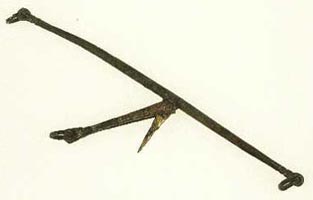
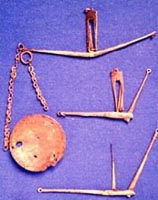
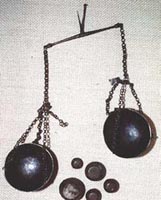 These are a few examples of Viking age scales from my files that were used as inspiration for my balance scales. Numerous examples can be found doing a simple search on line. The scales were most often made of "copper alloy" or a close approximation of bronze or brass.
These are a few examples of Viking age scales from my files that were used as inspiration for my balance scales. Numerous examples can be found doing a simple search on line. The scales were most often made of "copper alloy" or a close approximation of bronze or brass. 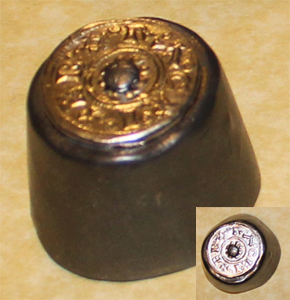
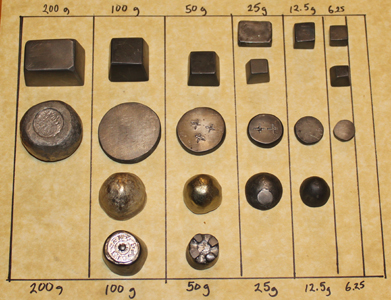
I also intend to make a series of 12 sided small weights that have their origins in the Arabic countries but were copied by Viking traders. Those will have a slightly different calibration in size/weights.
Important to note is that most recovered sets of Viking age weights were not variants of one style but mixed sets of patterns and the actual weights of the pieces did not follow a strict system. Worse, they often were "off the mark" of specific weight calibrations.
My fav' so far, is the coin topped truncated cone weight. The picture (right.) does not show the true color of the coin, hence the insert. The piece is a single cast pewter weight where I placed a resist mask on the coin before applying nitric acid to cause the patina on the body of the weight. The "nail" in the center, was also exposed pewter with patina. The "silver" coin, now has a coating to keep the shine so there is good contrast.

This collection illustrates a few designs of Viking age weights made of lead, copper alloys and other materials.
(A.) This Viking coin weight is from Wareham and has a silver penny of Ethelred I of Wessex nailed on the top of the lead base. Located at the British Museum.
(B.) The first top two weights have ceramic decorations that may have been made for the weights and look similar to Arabic script but are actually just designs. The other weights with applied tops have bronze hack metal fastened to the tops. Then there is one single lead weight that looks like a chess castle piece. It was found with the other weights.
(C.) These three weights are first, a truncated pyramid, then a thick disk and a round shape similar to a ball that has been flattened.
(D.) The top three of these weights are made of brass and the four darker ones are lead.
(E.) A real mix of patterns, the middle right seems to have a copper alloy insert. Reference "Llanbedrgoch Viking weights". under the Portable Antiquities Scheme.